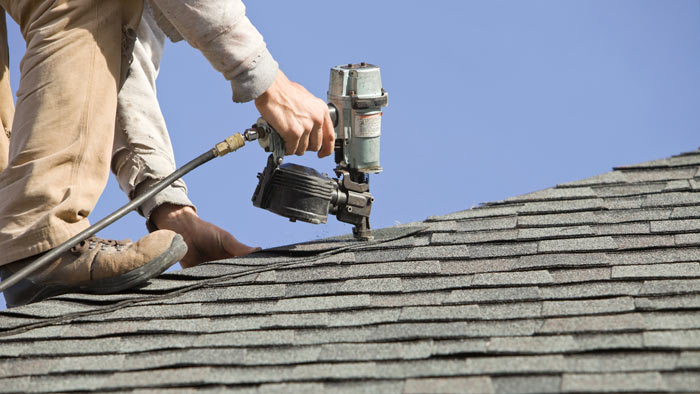
Image Source – Google
Shingle roofs are a popular choice for many homeowners due to their durability, aesthetics, and affordability. However, even the most well-maintained shingle roof can develop issues over time, such as leaks, missing shingles, or damage from severe weather. While some roof repairs may require professional assistance, there are plenty of DIY shingle roof repair projects that you can tackle yourself to keep your roof in top condition.
The first step in any DIY shingle roof repair project is to assess the damage and determine the extent of the repairs needed. Start by inspecting your roof for any missing, cracked, or damaged shingles. Look for signs of wear and tear, such as curling edges or granule loss. Check for any leaks or water damage inside your home, as these can be indicators of roof issues. Once you have identified the problem areas, you can start gathering the necessary tools and materials for the repair. If you are looking for shingle roof repair services then you can browse to this link https://www.heartroofingflorida.com/shingleroofs.
One of the most common DIY shingle roof repairs is replacing missing or damaged shingles. To do this, you will need replacement shingles that match the color and style of your existing shingles, as well as roofing nails, a hammer, a pry bar, and roofing cement. Start by carefully removing the damaged shingle with the pry bar, being careful not to damage the surrounding shingles. Slide the new shingle into place and secure it with roofing nails. Finally, seal the edges of the shingle with roofing cement to prevent leaks.
If your shingle roof has a leak, it is essential to address it as soon as possible to prevent further damage to your home. Start by locating the source of the leak and inspecting the surrounding shingles for any damage. Once you have identified the problem area, you can temporarily patch the leak with roofing cement or a shingle patch. For a more permanent solution, you may need to replace the damaged shingles and seal any gaps or cracks in your roof.
Another common issue with shingle roofs is ice damming, which occurs when snow and ice build up on the roof and prevent proper drainage. To prevent ice damming, make sure your attic is properly insulated and ventilated to keep your roof cold and prevent snow from melting and refreezing. You can also install a snow rake to safely remove snow from your roof and prevent ice dams from forming.
Regular maintenance is key to prolonging the life of your shingle roof and preventing costly repairs. Make sure to clean your gutters regularly to prevent debris buildup and ensure proper drainage. Trim any overhanging branches that could damage your roof during storms. Inspect your roof at least once a year for any signs of damage or wear and tear. By staying on top of maintenance tasks, you can catch small issues before they become major problems.
While DIY shingle roof repairs can save you money and give you a sense of accomplishment, there are some situations where it is best to leave the job to the professionals. If your roof is severely damaged, if you are not comfortable working at heights, or if you are unsure of how to properly repair your roof, it is best to hire a roofing contractor. A professional roofer will have the skills, experience, and equipment needed to safely and effectively repair your roof.
In conclusion, DIY shingle roof repair projects can be a cost-effective way to maintain your roof and keep your home safe and dry. By following this ultimate guide to DIY shingle roof repair, you can tackle common roofing issues with confidence and ease. Remember to always prioritize safety, use the proper tools and materials, and seek professional help when needed. With a little time and effort, you can prolong the life of your shingle roof and ensure that your home is protected for years to come.
